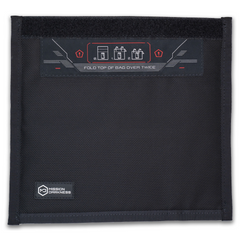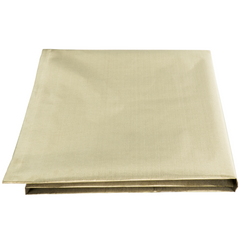In an increasingly connected world, the demand for devices and solutions that protect against unwanted electromagnetic interference is on the rise. Enter the realm of faraday solutions, where do-it-yourself (DIY) enthusiasts and professional manufacturers lock horns over effectiveness. But how do homemade solutions compare to professionally designed faraday shielding products? Let’s dive deep.
Understanding the Basics of Faraday Shielding
Originating from Michael Faraday's groundbreaking work in the 19th century, faraday cages or shields were designed to block external static and non-static electric fields. At its core, this shielding works by redistributing electromagnetic charges, thus neutralizing internal electric fields. Electronic devices housed inside a faraday enclosure remain isolated from radio frequency signals and electromagnetic interference.
The Allure of DIY Faraday Solutions
The DIY ethos, spurred by cost-saving, customizability, and accessibility, has naturally extended to faraday solutions. With so many resources these days ranging from online tutorials to weekend meet-up groups, faraday DIYers have grown in their population and capabilities. After all, the notion of lining a box or wrapping a device in several layers of aluminum foil seems straightforward for a newbie to experiment with faraday shielding. Some enjoy the flexibility of tailoring solutions to specific needs, while others appreciate using easy-to-find materials.
- Aluminum foil and bins are often used to create simple faraday enclosures at home, for uses ranging from shielding keyfobs from potential signal amplification relay attacks to protecting survival equipment from EMP damage.
- Flexible metallic sheets like TitanRF Faraday Fabric and TitanRF Faraday Fabric Panel are a nickel and copper composition plated polyester material that can be cut, sewn, taped, hung on walls, and used for a variety of DIY shielding projects, as shown below.
Limitations and Challenges of DIY Solutions
However, DIY approaches come with their own set of challenges:
- Inconsistent Shielding: A homemade solution might have gaps or weaknesses, especially if non-specialized materials are used. This inconsistency can compromise the shield's efficacy.
- Durability Concerns: Over time, wear and tear on DIY solutions can diminish their protective capabilities.
- Incomplete Frequency Coverage: A foil might block one frequency but leave others untouched, creating vulnerabilities.
- Testing Limitations: The biggest challenge? Validating efficacy. Without specialized equipment, one can never be too sure about a DIY solution's effectiveness.
Professional Faraday Solutions: Why They Stand Out
Contrast this with professional faraday solutions, which offer:
- Specialized Materials: These products are made with specific metals optimized for shielding, like TitanRF Faraday Fabric and TitanRF Faraday Tape, ensuring consistency.
- Precision in Design: Through rigorous research and design processes, these solutions guarantee comprehensive protection.
- Durability: Crafted to endure, professional solutions resist wear, offering long-term security.
- Verified Protection: Before hitting the market, trusted faraday products undergo rigorous laboratory testing against a spectrum of frequencies to validate their protection claims. Ensure the product you are considering has verified shielding claims, such as MIL STD 188-125 (compliant for high altitude EMP resistance) and IEEE 299-2006 (shielding effectiveness standards).
The Risks of Inadequate Shielding
Venturing into the world of electromagnetic shielding without proper protection can expose one to:
- Data Vulnerabilities: In today's digital era, a slight compromise can lead to data breaches or unauthorized spying.
- Safety Concerns: In specialized fields, such as digital forensics, improper shielding can jeopardize the integrity of investigations. Improper shielding allows the possibility of device hacking, tracking, spying, remote wiping, and chain-of-custody corruption.
- False Sense of Security: Perhaps most dangerous is the belief that one is protected when, in reality, they are exposed to lurking threats.
Making an Informed Choice
To navigate this realm:
- Assess Your Needs: Determine if you need a solution for daily personal use or a more rigorous professional application. Professional applications should never rely on DIY shielding enclosures.
- Cost vs. Benefit: Consider the long-term benefits of investing in a dependable, professional product against the short-lived gains and potential risks of a DIY setup. Lab-tested and trusted faraday bags greatly vary in style and price, but compare this popular Mission Darkness cell phone faraday bag which costs $23 USD, the same price as a yard of faraday fabric and tape used to build a DIY cell phone faraday bag. The professional product seems like the optimal choice, even offiering a 1-year shielding warranty, which overall is a small price to pay for the protection it offers.
- Image of a DIY reusable faraday phone sleeve crafted from TitanRF Faraday Fabric, TitanRF Faraday Tape, and a Velcro strip. The fabric kit includes tape and instructions. This is a fun project and nice solution for non-professional applications since it doesn't offer verified protection.
- Image of the Mission Darkness Non-window Faraday Bag for Phones, one of the most popular faraday bags on the market for uses such as law enforcement and military forensic evidence collection, defense against data theft, personal security, EMP protection, EMF radiation reduction, and to enhance digital privacy.
Conclusion
While the DIY spirit is commendable and sometimes groundbreaking, when it comes to faraday shielding, the stakes are high. The intricate balance between protection, durability, and reliability tilts in favor of professional solutions. As you weigh the pros and cons, always prioritize safety and effectiveness in this electrifying arena.
If you're a DIY enthusiast and want to learn how to build different types of faraday enclosures using preferred materials and construction techniques, watch these videos below.
Faraday Materials Overview
Faraday Box Construction



